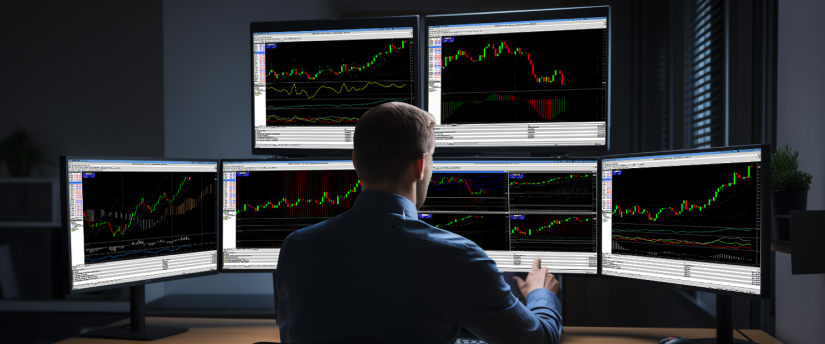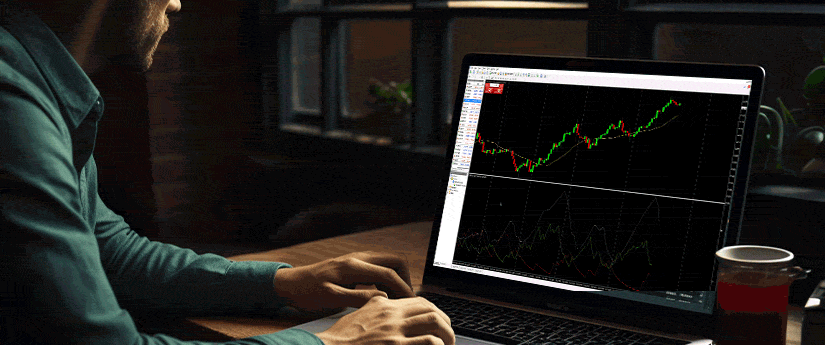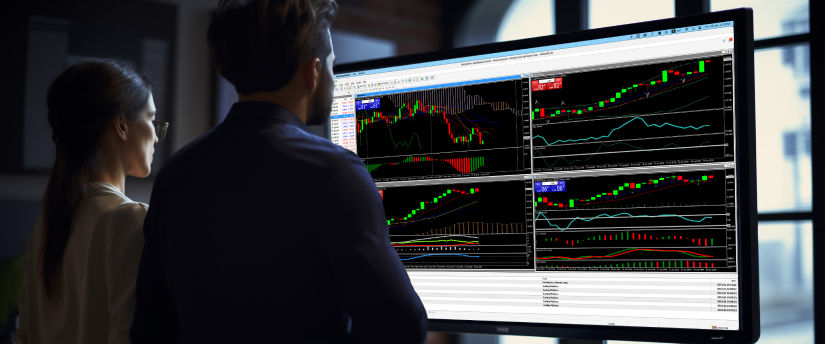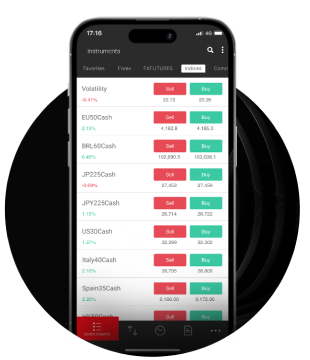We all face the same question: What is the best type of trade? Whether you are exploring the financial markets for the first time, or have been doing it for some time now, the answer will always remain more complex than simple.
The financial market consists of a wide range of asset classes and assets, together with their corresponding strategies and each comes with a separate set of advantages and disadvantages. The “best” is to undertake is not absolute, but rather it is entirely relative to an individual’s objectives, personality, available capital, and risk tolerance.
But don’t worry, we will try and explain all this. This article focuses on exploring various strategies like day trading, swing trading, scalping, and position trading, as well as instruments like stocks, commodities, and forex. By the end of the article, you will have a clearer understanding of which type of trade works best for you.
Different types of trading: The big four
Let’s begin with styles. They define your time frame, risk tolerance, and daily involvement in the markets.

Day trading
Day trading is the act of opening and closing a trade on the same trading day. Its objective is to profit from short-term price movements.
It is great for traders who love action and enjoy quick decision-making. They can dedicate a few hours a day to tracking markets, and handle pressure well.
The pros of this style are there is no overnight risk, there are many opportunities and can be extremely rewarding if you can exercise
discipline and have a good strategy. However, it is not without its cons. It can very stressful, costs a lot of time and requires quick execution and repeated sophisticated tools. While this style is great for those who crave enthusiasm and action, and enjoy repetition, it is definitely not for the faint of heart.
Swing trading
Swing traders hold positions for a few days or several weeks and aim to profit from medium-term price fluctuations. This style suits traders who seek a more balanced lifestyle, so they can spend less time on the screen than day traders but be more active than long-term investors.
The positives of swing trading are: it is less time-consuming than day trading, traders can capitalise on large price swings and is a better fit for technical and fundamental analysis traders.
However, swing traders are exposed to overnight and weekend market volatility and need to have patience and self-discipline to endure risk. If you have more time on your hands but also can let trades run for a few days, then this is well-suited for you.
Position trading
Position traders are the long-term traders in the trading world. They hold trades weeks, months, or years out depending on macro trends. As a style that requires patience, it is suited for strategic traders with a high level of fundamental analysis.
While it less time-consuming and less susceptible to day-to-day market noise, it requires traders who have good fundamental knowledge, who can tie up their funds for extended periods of time and can ignore short-term gains. For these reasons, position trading is a good fit for traders who don’t need to be glued in front of their computer screens every day.
Scalping
Scalpers make dozens (sometimes hundreds) of trades per day, hoping to earn tiny profits. Scalpers need to be highly disciplined, tech-savvy with exact execution and the ability to handle rapid-fire decision-making. They can explore lots of opportunities but they may need sophisticated tools and low latency. The dynamic nature of can generate high stress and burnout.

Trading different markets
Stock Trading
Equity markets provide a huge range of instruments, from blue-chip shares to wild small caps. Traders love it for their familiarity and transparency, the availability of strong fundamental data and the trending and range-bound market opportunities.
If you are looking to stocks, then swing and position trading are the most common trading styles, especially for those who take leads from earnings, news, and sector trends. Active traders can, however, also scalp or day trade on technical setups.
Commodity Trading
From oil, gold, wheat, and natural gas, commodities can be through futures contracts, ETFs, or CFDs. Traders enjoy commodities because supply-demand imbalances often drive strong trends. Commodities also tend to react sensitively to geopolitical and macroeconomic events. They also offer hedging and diversification potential.
Position and swing trading dominate the landscape here, although active traders who enjoy short-term periods in highly liquid commodities like gold and crude oil do have opportunities.
Trading with digital currencies
Crypto markets are decentralised, highly volatile, and 24/7 open. Traders find digital currencies attractive due to the high volatility which can mean big opportunities, the huge variety of tokens and use cases as well as the fact there is no downtime, as markets run
Nonstop. Day trading and swing trading are popular in crypto due to the relentless volatility. Scalping can also be lucrative but needs extremely tight risk management.
Does you personality match a specific trading style?
For those traders who are impatient, action seekers, scalping or day trading are the best fit.
Balanced, well-rounded traders can go for swing trading, while those who are more patient, big-picture thinkers can settle for position trading. A highly disciplined and structured trader can strart with any style as they can adjust and follow the rules with more flexibility. The important thing is to go with a style that fits you as you currently live and work. You can adapt and change as you become more experienced and comfortable.
Risk Management
Whatever type is you take part in, your success is based on risk management.
Stop-losses: You should always identify your risk in every trade before it begins.
Position sizing: Don’t put on too much leverage. Identify what you will risk with each position.
Diversification: Do not start a single instrument with your entire capital (risk) on one trade.
Keep a trading journal: Track your wins, losses, emotions, and setups.
Many new traders get caught up on which style of it is the “best.” Experienced traders will tell you, picking the best trade is not nearly as important as consistent risk management.

So, what’s the best type of trading?
There’s no one answer for everyone. What follows are some scenarios to help you decide:
- Have you a full time job but you wish to do it part time, swing trading stocks or forex might be best.
- Can you can trade intra-day and want fast-paced action, day trading forex is a more appropriate fit.
- If you’re patient and want to build wealth from trends and are longer term focused, then position trading commodities or equities is a good option as well.
- If you’re disciplined and tech savvy, scalping forex and futures will give you consistent opportunity.
Ultimately, the best type is based on your availability and your lifestyle, what you are comfortable with in terms of risk, and your psychology.
Your path as a trader is unique to you. The markets will test your patience, your emotional state and your decision-making abilities. As such it is crucial that you in a way which compliments you, not in a way you wish you could. The best kind of trade is one where you can stay in the game long enough to get valuable lessons, adjust and then, hopefully, succeed.
So, whether you are scalping the EUR/USD on a Tuesday morning or holding gold futures for six months from now, if that is the best deal for you, then that is your best trade.
免责声明: This information is not considered investment advice or an investment recommendation, but instead a marketing communication. IronFX is not responsible for any data or information provided by third parties referenced, or hyperlinked, in this communication.
















